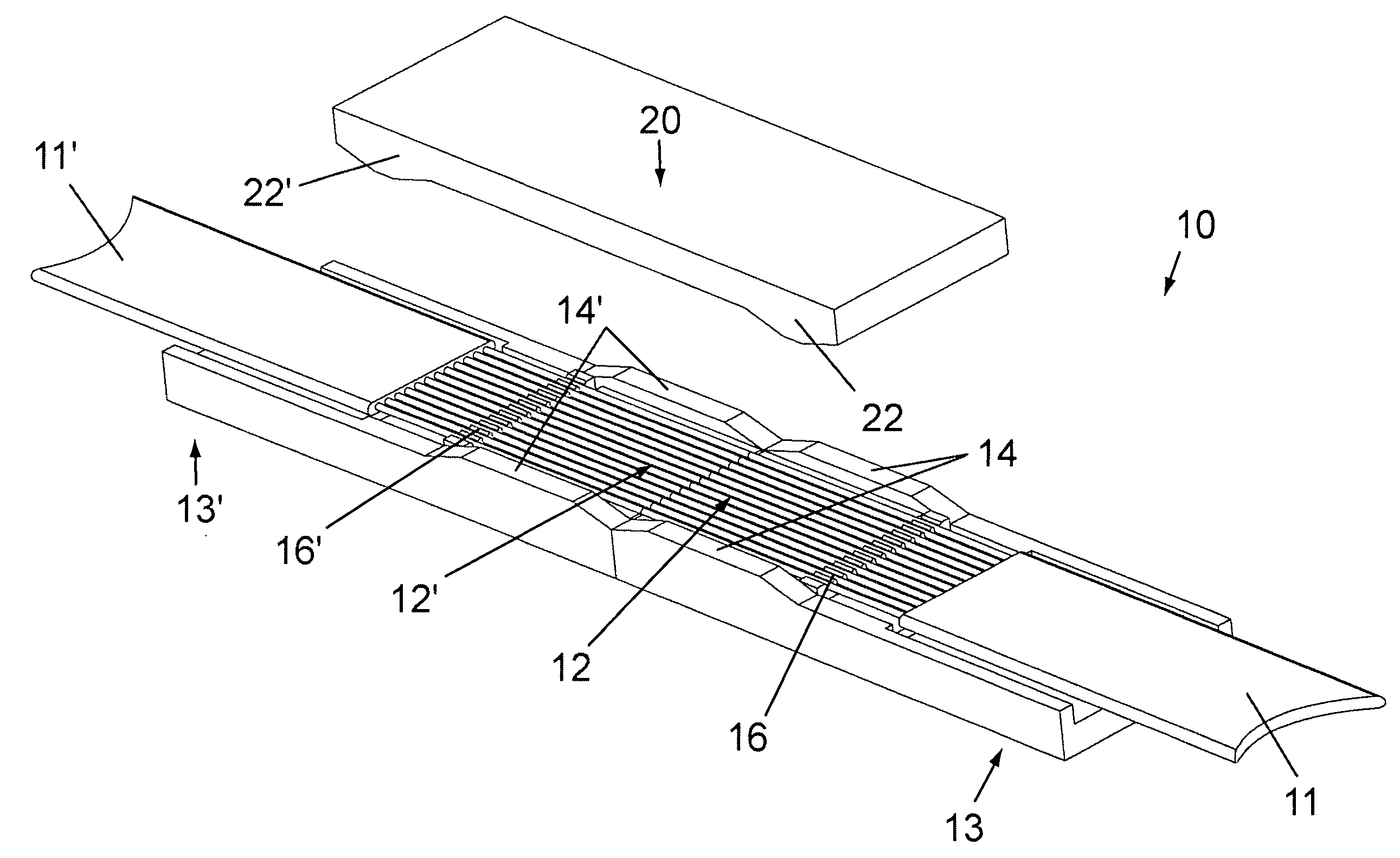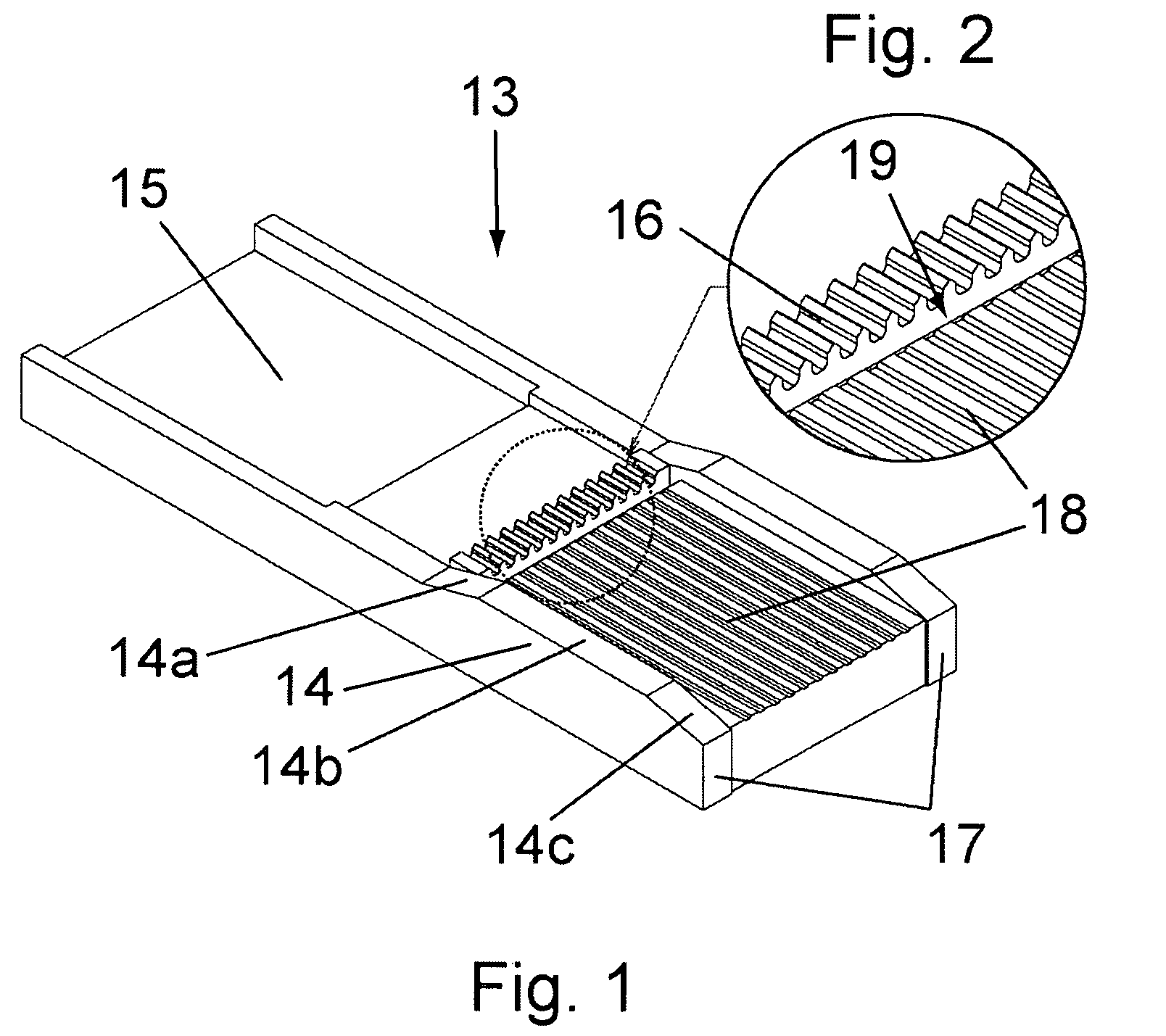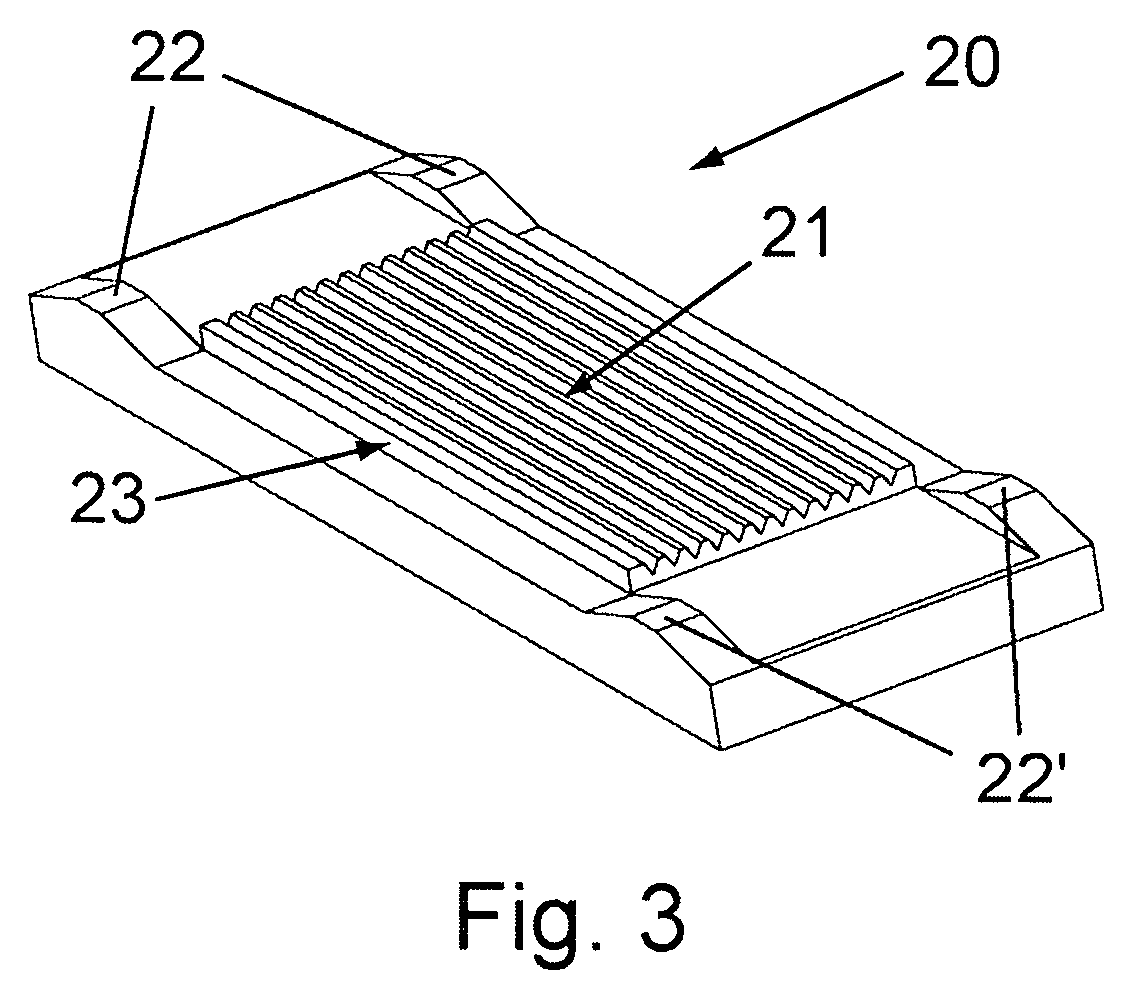Method for releasably connecting two groups of optical fibers, and plug-in connector for carrying out said method
- Summary
- Abstract
- Description
- Claims
- Application Information
AI Technical Summary
Benefits of technology
Problems solved by technology
Method used
Image
Examples
Embodiment Construction
[0037] The present invention is designed in such a way that it meets the following requirements without a ferrule: [0038] suitable for monomode and multimode [0039] low insertion loss [0040] temperature range: −40° . . . 85° C. [0041] high plugging reliability [0042] high mechanical stability [0043] connection of multifiber cables (with preferably 8 or 12 single fibers) or any number of single fibers [0044] plug-in connector for any contact spacing and diameter of the fibers (preferably fibers with a diameter of 125 micrometers and equidistant spacing of 250 micrometers)
[0045] The basic physical necessities for efficient optical coupling between two fibers in physical contact (PC) comprise adequately good mutual lateral centering, best possible surface quality of the fiber end face and a minimal axial pressing force of the order of magnitude of about 0.4 N per fiber (see for example the article by M. Kobayashi et al., Injection Molded Plastic Multifiber Connector Realizing Physical...
PUM
 Login to View More
Login to View More Abstract
Description
Claims
Application Information
 Login to View More
Login to View More - R&D
- Intellectual Property
- Life Sciences
- Materials
- Tech Scout
- Unparalleled Data Quality
- Higher Quality Content
- 60% Fewer Hallucinations
Browse by: Latest US Patents, China's latest patents, Technical Efficacy Thesaurus, Application Domain, Technology Topic, Popular Technical Reports.
© 2025 PatSnap. All rights reserved.Legal|Privacy policy|Modern Slavery Act Transparency Statement|Sitemap|About US| Contact US: help@patsnap.com



